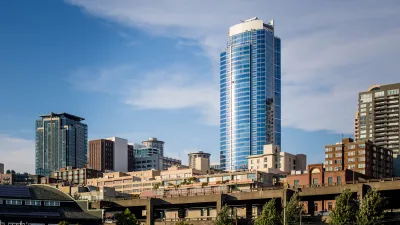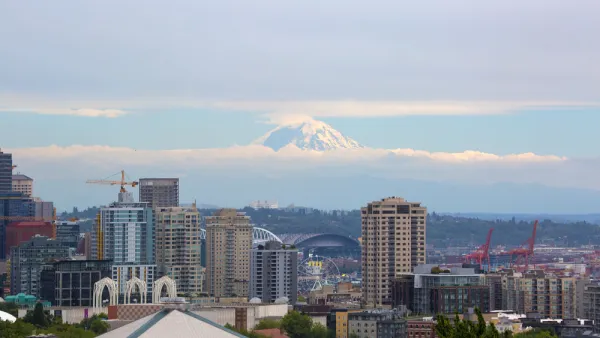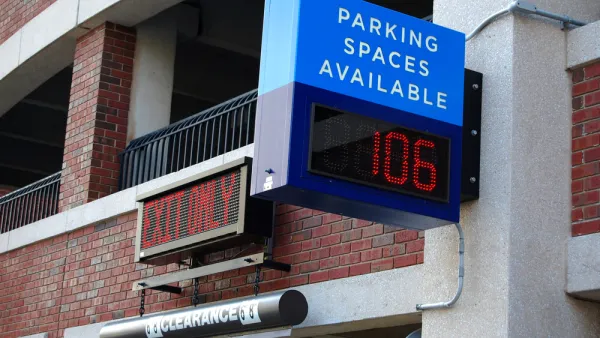To preserve views, zoning rules from 2006 require adequate distance between residential towers of a certain height. As developers chafe against the restriction, residents still worry they'll be left facing a wall.

Another symptom of Seattle's success: limited access to a decent view. Condos boasting picture-window vistas a decade ago lose their allure when an even taller residential tower goes up 20 feet away.
Seattle has taken steps to prevent that from happening. "The city's tower-spacing rule, which governs a large swath of downtown, was adopted nearly a decade ago to preserve views and daylight in an increasingly dense downtown [...] When the city overhauled the zoning code in 2006, it allowed developers to build denser, higher towers in downtown's mixed-use areas."
"To prevent streets from becoming walled corridors that block out light and views, and make pedestrians feel like they're in a wind tunnel, the city required that new towers over 160 feet high be 60 to 200 feet away, depending on the part of downtown, from other existing or permitted ones." Unfortunately, or fortunately, depending on how you look at it, this rule puts adjacent developers into competition for the permit to build higher. "Even small delays by either side can lead to being second in line for a tower permit and huge lost opportunities [...]"
Still, the tower-spacing rule enjoys public support. "Some residents of other downtown areas where the tower-spacing rules don't apply wish they had such restrictions. They say they live in fear of having a tower built a stone's throw from their window." To address those fears, some developers are experimenting with the podium-style developments (wide base, often with retail, and a thin, glassy tower on top) that have seen success in Vancouver.
FULL STORY: Rules preserving city views set up clash among towers competing to be first, biggest

National Parks Layoffs Will Cause Communities to Lose Billions
Thousands of essential park workers were laid off this week, just before the busy spring break season.

Retro-silient?: America’s First “Eco-burb,” The Woodlands Turns 50
A master-planned community north of Houston offers lessons on green infrastructure and resilient design, but falls short of its founder’s lofty affordability and walkability goals.

Delivering for America Plan Will Downgrade Mail Service in at Least 49.5 Percent of Zip Codes
Republican and Democrat lawmakers criticize the plan for its disproportionate negative impact on rural communities.

Test News Post 1
This is a summary

Test News Headline 46
Test for the image on the front page.

Balancing Bombs and Butterflies: How the National Guard Protects a Rare Species
The National Guard at Fort Indiantown Gap uses GIS technology and land management strategies to balance military training with conservation efforts, ensuring the survival of the rare eastern regal fritillary butterfly.
Urban Design for Planners 1: Software Tools
This six-course series explores essential urban design concepts using open source software and equips planners with the tools they need to participate fully in the urban design process.
Planning for Universal Design
Learn the tools for implementing Universal Design in planning regulations.
EMC Planning Group, Inc.
Planetizen
Planetizen
Mpact (formerly Rail~Volution)
Great Falls Development Authority, Inc.
HUDs Office of Policy Development and Research
NYU Wagner Graduate School of Public Service




























